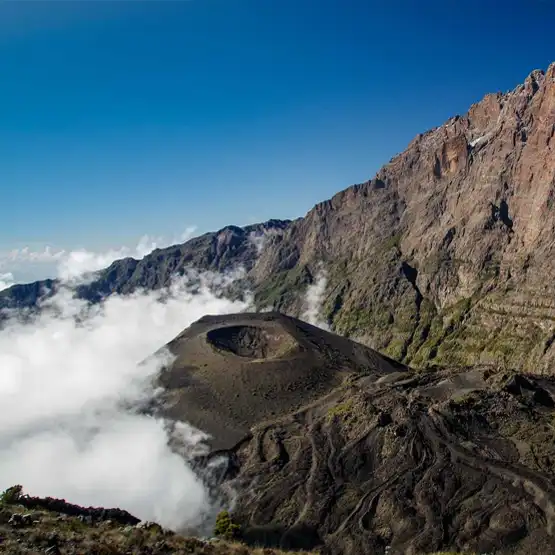Tanzania Beaches Rising Sea Levels 2024
Tanzania’s coastline, adorned with pristine beaches and vibrant marine life, is a treasure trove for tourists and a vital resource for local communities. However, the effects of rising sea levels due to global climate change are posing significant threats to these cherished landscapes. From coastal erosion to the loss of biodiversity, the challenges are immense. But Tanzania is taking proactive steps to adapt and protect its beaches for future generations.
The Impact of Rising Sea Levels on Tanzania’s Coastline
- Coastal Erosion and Loss of Beaches: Rising sea levels have accelerated the erosion of Tanzania’s beaches, with iconic destinations like Zanzibar and Dar es Salaam experiencing noticeable shoreline retreats. This erosion threatens not only the aesthetic beauty but also the infrastructure supporting the tourism industry.
- Threats to Marine Ecosystems: Higher sea levels disrupt marine habitats, including coral reefs and seagrass beds, which serve as critical nurseries for marine life. The degradation of these ecosystems can lead to a decline in fish populations, affecting both biodiversity and local fisheries.
- Impacts on Local Communities and Livelihoods: Coastal communities in Tanzania depend heavily on fishing, tourism, and small-scale farming. Rising sea levels have led to saltwater intrusion, flooding, and the displacement of families, jeopardizing their livelihoods and way of life.
Tanzania’s Response to Rising Sea Levels
- Government-Led Initiatives: The Tanzanian government has developed policies and programs to address coastal challenges. These include the National Adaptation Programme of Action (NAPA), which focuses on protecting vulnerable coastal areas and investing in sustainable development projects.
- Community-Driven Adaptation Efforts: Local communities are spearheading initiatives to safeguard their coastlines. These efforts range from planting mangroves to organizing clean-up campaigns that keep beaches free of debris, allowing natural ecosystems to thrive.
- Role of International Organizations: Partnerships with global organizations such as the World Bank and the United Nations Development Programme (UNDP) have brought funding, expertise, and resources to support Tanzania’s coastal resilience efforts.
Innovative Solutions for Beach Preservation
- Planting Mangroves to Reduce Erosion: Mangroves act as natural barriers against storm surges and erosion. Efforts to replant mangrove forests along Tanzania’s coastlines have proven effective in stabilizing shorelines and creating habitats for marine species.
- Building Seawalls and Breakwaters: Seawalls and breakwaters are engineering solutions designed to protect coastlines from wave action and prevent further erosion. While these structures can be costly, they provide essential protection for vulnerable areas.
- Restoring Coral Reefs as Natural Barriers: Coral reefs act as natural wave breakers, reducing the energy of waves hitting the shore. Restoration projects, such as coral gardening, are helping rebuild these underwater ecosystems, providing both ecological and economic benefits.
The Role of Sustainable Tourism
- Encouraging Eco-Friendly Tourism Practices: Tourism operators are adopting eco-friendly practices, such as using solar energy, minimizing waste, and educating visitors on the importance of protecting marine environments.
- Reducing Environmental Footprints in Coastal Areas: Efforts to reduce pollution and manage waste are critical to preserving Tanzania’s beaches. By implementing sustainable practices, tourism operators can help maintain the natural beauty of these destinations.
- Partnerships Between Tourism Operators and Conservationists: Collaborative initiatives between tourism businesses and conservation groups have led to projects like reef restoration and wildlife protection programs, ensuring that tourism contributes positively to the environment.
Challenges in Adapting to Climate Change
- Limited Funding for Large-Scale Projects: Securing adequate funding remains a significant obstacle to implementing large-scale adaptation projects. Many initiatives rely on international grants, which can be inconsistent.
- Balancing Development with Conservation: Rapid urbanization and tourism development along the coast can conflict with conservation goals. Striking a balance between economic growth and environmental protection is crucial.
- Engaging Local Communities in Long-Term Solutions: Community participation is essential for sustainable adaptation. However, limited awareness and resources can hinder the effectiveness of grassroots efforts.
Success Stories Along Tanzania’s Coastline
- Zanzibar’s Mangrove Restoration Projects: Zanzibar has successfully restored vast mangrove forests, which not only protect the coastline but also support local economies through sustainable harvesting.
- Mafia Island’s Coral Reef Conservation Initiatives: Mafia Island’s marine park is a shining example of how coral reef restoration can revitalize marine biodiversity and attract eco-tourism.
- Bagamoyo’s Community-Led Beach Preservation Efforts: The coastal town of Bagamoyo has mobilized its community to combat erosion through tree planting and sustainable land management practices, preserving its rich cultural heritage.
Future Outlook for Tanzania’s Beaches
- Anticipated Changes in Coastal Landscapes: With rising sea levels projected to continue, Tanzania’s coastline will likely undergo significant changes. Proactive measures can help mitigate these impacts and preserve key areas.
- Strengthening Resilience Against Climate Change: Investing in climate-resilient infrastructure and nature-based solutions will be critical for protecting Tanzania’s beaches and coastal communities.
- The Importance of Global Climate Action: Tanzania’s efforts alone cannot counter the global phenomenon of rising sea levels. International cooperation and decisive action on climate change are essential to ensure the long-term survival of coastal ecosystems worldwide.
Tanzania’s beaches are not just natural wonders—they are lifelines for local communities and global treasures. Adapting to rising sea levels requires a multi-faceted approach, from mangrove restoration to sustainable tourism practices. While challenges remain, the progress made so far offers hope that these efforts can preserve Tanzania’s coastline for generations to come. The time to act is now, and everyone has a role to play in protecting these invaluable ecosystems.
FAQs
- How are rising sea levels affecting Tanzania’s beaches?
They cause coastal erosion, habitat loss, and flooding, threatening both ecosystems and local livelihoods. - What is Tanzania doing to combat coastal erosion?
Initiatives include mangrove planting, seawall construction, and coral reef restoration projects. - How does sustainable tourism help preserve beaches?
It promotes eco-friendly practices, reduces pollution, and funds conservation efforts through responsible tourism activities. - Why are mangroves important for protecting coastlines?
Mangroves act as natural barriers, reducing erosion and providing habitats for marine species. - How can individuals support beach conservation in Tanzania?
Visitors can support eco-friendly tours, participate in beach clean-ups, and donate to conservation programs.






